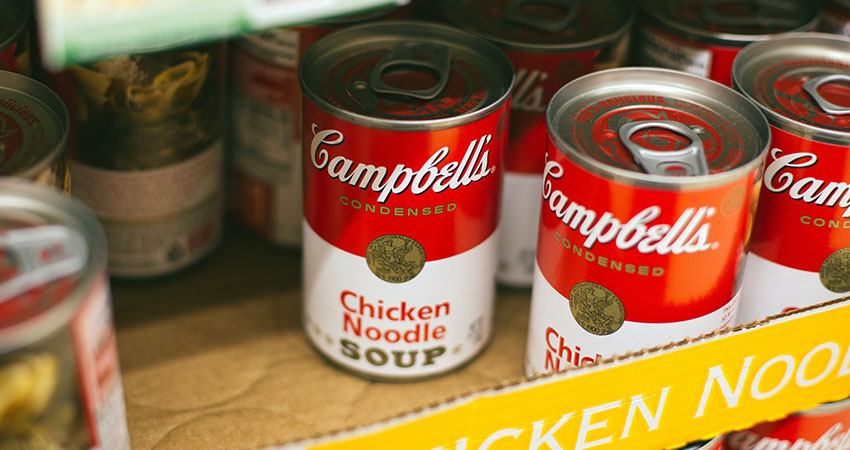CPG brands are seeing things differently these days (Photo by Calle Macarone on Unsplash)
The consumer packaged goods (CPG) industry is evolving faster than ever, especially in marketing efforts. Nearly everything about the category has changed, including the classifications of CPG, the way brands develop and bring products to market and how consumers are learning about and purchasing products.
Seven in 10 adults trust food and beverage companies, and consumers tend to have longstanding relationships with brands in this category, per Morning Consult’s Most Trusted Brands 2022. However, given the number of options in the marketplace, today’s consumers will tend to try new brands, especially if a legacy brand breaks their trust. Additionally, younger consumers are more open to making a change when sustainability and business reputation come into play.
The U.S. saw a significant shift to ecommerce channels during the pandemic. There was also a combination of greater availability of venture capital and affordable digital advertising options. This empowered emerging brands to boost DTC sales and removing barriers that stood strong for decades. These obstacles protected established brands’ market share and prevented competitors from finding success.
New Ways Consumers Are Driving Purchases
How consumers purchase CPG products is constantly and rapidly changing. Some enjoy the convenience of “set it and forget it” subscription services for everyday items like diapers and dog food via Amazon, The Honest Company, Chewy and other DTC platforms. This makes adjusting frequency of reordering simple and often at a cost savings. COVID helped transition late adopters to ecommerce ordering, pickup or delivery of groceries and other supplies. With stores open again, they’re using their digital shopping know-how to compare prices and availability on smart devices in real time, which demands multichannel selling for CPGs to be a top priority.
Another factor: millennial and Gen Z consumers are not only actively searching for products that meet their needs at a competitive price. They’re researching how brands fit their values, including sustainability and corporate commitment to employees and communities, wanting to feel good about their purchases.
However, as inflation puts pressure on brands’ marketing budgets and new choices proliferate, loyalty is weakening, especially for legacy brands. Younger consumers have higher expectations for brand interactions, and they tend to be skeptical of advertising efforts.
Marketers are seeing that shoppers will try store brands or lesser-known products if they are marketed in a way that speaks to them and aligns with their values. Newer brands that succinctly convey product benefits while communicating a strong mission can pick up today’s more socially conscious consumers, including companies like Romer, the skincare line minimizing waste and their water output. This brand gets attention from even exhausted beauty enthusiasts thanks to simplification of routine and sustainability.
Landscape Shifts and Razor Smart Strategies
Consumer buying habits are changing, so brands too must pivot and adjust to meet their wants while balancing convenience with the experience. Legacy CPG brands meet these challenges in different ways. Some offer products on multiple channels, while others acquiring emerging brands to reach new consumers.
Marketers must be keenly aware of CPG landscape shifts. Legacy brands who once had the clear advantage are now embracing emerging direct-to-consumer brands and acquiring their one-time competitors. Witness the purchase of Billie by Edgewell Personal Care, known for Schick and Banana Boat, in November 2021. What made Billie different was showing the true woman – hair and all. Women were empowered to do what they wanted regarding their body hair, and they could enjoy a customized Billie subscription, delivered right to their door.
Emerging brands know that product development and distribution shifts change the playing field. Instead of scaling up for an IPO, many realized the advantages of being acquired earlier on, allowing quicker production and distribution capabilities. However, this has meant a marketplace flooded with more brands and products than ever, making it fiercely competitive. According to a recent McKinsey report, “low barriers to entry have encouraged an explosion of DNBs (digitally-native brands). Over the past two decades, fewer than 0.5% of DNBs have reached $100 million in revenue. Investors face the challenge of sifting through concepts to determine which are worthy of the capital required to scale a business or buy into an existing company at high multiples.”
In other cases, brands that were previously welcomed into the fold by large CPG companies are now finding they do better when the new owners invest more in product quality, innovation and marketing, as occurred with Funfetti, Krave and Haagen-Dazs.
CPG Products, Messaging That Break Through
Emerging CPG brands demonstrated that a focus on social media and influencer marketing can drive fast growth. Even legacy CPG brands have invested heavily in those channels, using TikTok and Instagram to drive sales. Brands like e.l.f. have been transformative in finding a medium where fans can embrace an unfiltered e.l.f. life by way of BeReal or engage in a TikTok viral dance challenge like #EyesLipsFace. Further, Amazon offers newer brands a quicker and easier path to ecommerce. But these more isolated efforts, when examined, should not be mistaken as a stand-alone marketing strategy.
For CPG companies to successfully launch and grow a brand, an omnichannel approach is a must, both for sales and marketing. It should expand well beyond the initial customer base of loyalists, cut through the noise of the competition and require continuous analysis to pinpoint those consumer segments the brand hasn’t reached yet.
There are unlimited opportunities for CPG brands to meet the needs of consumers and invest in smart advertising – like a kid in a candy store. Marketers are advancing in the evolving world of advertising and developing the future of CPG, where there are no DTC limitations.
Karla Crawford Kerr is VP of Marketing for Hawthorne Advertising

